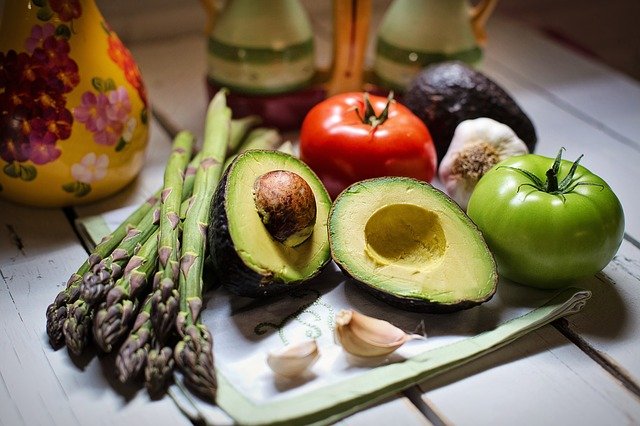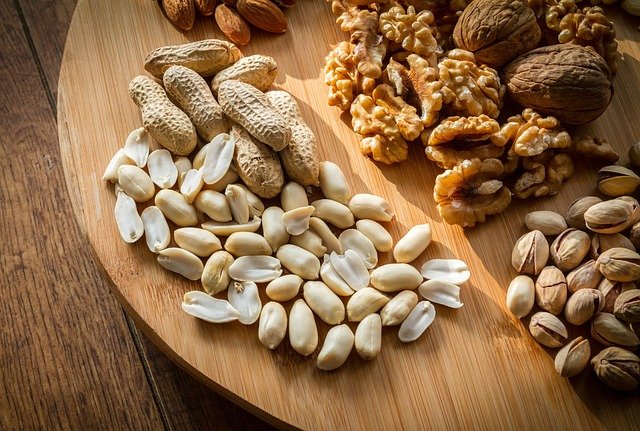The term superfoods is a powerful one and indicates how much certain ingredients are packed with more benefits than regular healthy food. Almost every day, we see an article saying that a new superfood has been discovered. But in these times of social media and fake news, how do you know what is a real superfood and what is a marketing gimmick?

In this article, we’ll talk about what makes some foods super, how you can integrate them into your diet, and what benefits you can expect.
What are superfoods?
While the expression superfood is not regulated like other ingredients or foods (such as gluten-free for example), these foods can be summarized as nutrient-rich whole foods that provide more vitamins or minerals than other foods and will not overload the system with unhealthy substances.
Superfoods promote long-term health and well-being and are associated with the benefits of phytochemical and antioxidant content. They are usually whole foods in their most pure form and are usually plants, nuts, seeds, fruits and vegetables.
Quite simply, they are natural foods that have an extremely high nutrient density. Numerous studies are needed to establish the connection between that food and its health benefits for it to be touted as the next superfood.
What qualifies a food as a superfood?
While there is no official definition or terminology that qualifies some food types as superfoods, they should have the following characteristics to fall within that category. To be classified as super, a food type should:
- Be teeming with vitamins, minerals, Omega-3 fatty acids
- Be high in fibre, thereby contributing to a low glycemic index (GI)
- Not be overly high in calories in a single serving
- Have a high proportion of amino acids
- Contribute towards 25% or more of the recommended intake of two or more nutrients in a single-serve
- Be loaded with one particular nutrient delivering 50% or more of the recommended intake for the day
- Be brimming with other health-promoting substances such as phytonutrients or other substances not usually found in foods in their class
- Not be processed or enriched in any manner
- Not use detrimental compounds like excess sugar and fat to provide nutrients

What are the benefits of consuming superfoods?
The nutrient density of superfoods ensures numerous health benefits and offers a chance to have a healthy diet. The benefits include:
- Reducing DNA damage to cells
- Slow down the aging process
- Prevent the development of heart disease
- Mitigate the risk of cancer
- Reduce the risk of chronic diseases
- Help maintain a healthy weight
- Reduce the incidence of developing anxiety, depression and other mental health conditions
What combinations of superfoods can supercharge my diet?
Have you heard of food synergy? This is the relatively new concept of combining certain foods to deliver a nutritional punch that is greater than the single ingredient. If you combine certain ingredients, you can enjoy the incremental benefits to your health that they provide together.
Most of the ingredients below are superfoods in their own right, but with the right pairing, you can augment your diet even further:
Broccoli and tomato
Broccoli and tomatoes together are more effective at reducing prostate tumour growths than either one on its own and to reduce overall cancer risk in general.
Avocado and dark green leafy vegetables
When you combine the healthy fats of an avocado or tomato with dark green leafy veggies, your body can absorb the lutein (from the leafy veggies) and lycopene (from tomatoes) faster and more effectively.
Vitamins
Folate, vitamin B6 and B12 in combination have been found to reduce homocysteine levels in the blood which helps lower the risk of heart diseases.
Iron and vitamin C
Vitamin C allows the body to better absorb iron, in particular non-haem iron i.e. those found in plant-based foods. Combining oats with a glass of orange juice delivers a superfood combination like no other.
These are great combinations to deliver food synergy but it is recommended that you continue to consume a wide variety of foods from all food groups to meet your daily requirements for all necessary vitamins and minerals.
No matter how powerful a certain food combination is, a few ingredients cannot deliver all the nutrients that you require for optimal health.

What are superfoods that I should add to my diet?
Instead of looking at individual ingredients, we’re going to look at the most nutrient-rich of each food group to give you a wider range to choose from:
Vegetables
While all vegetables are nutrient powerhouses there are some which pack a greater nutritional punch than others. Vegetables deliver high quantities of vitamin C, fibre, vitamins, folate and minerals without burdening your system. Here are some that you should be eating every day:
- Spinach
- Cruciferous vegetables (cabbage, broccoli, Brussels sprouts)
- Dark-green lettuce (mignonette, rocket, baby spinach leaves)
- Avocados
- Beetroot
- Orange sweet potato
- Garlic
Grains and pseudo-grains
Grains need to be consumed in their natural, whole form with minimal processing to get the most out of them. Whole grains are ranked highly for B vitamins and minerals as well as their high fiber content. The best grains to consume are:
- Concentrated sprinkles such as wheatgerm and lecithin
- Wheat bran and other whole wheat products
- Brown rice
- Oat bran
- Psyllium
- Quinoa
- Amaranth
Nuts and seeds
Don’t let their size fool you. Nuts and seeds match (and sometimes exceed) foods from all other groups when it comes to nutrition. Topping the list are:
- Almonds
- Walnuts
- Hazelnuts
- Peanuts
- Flaxseeds
- Chia seeds
- Pumpkin seeds

Legumes
For some people, legumes may be difficult to digest, but for those who are comfortable eating them, they are a powerful ingredient for daily meals. Legumes offer fiber, high protein, carbohydrates and several vitamins and minerals. The ideal legumes to consume are:
- Soy and all related products
- Beans
- Sweet peas
- Lentils
Fruits
Like vegetables, fruits are nutritional powerhouses. Of all fruit varieties, berries and citrus fruits offer the greatest health benefits. Try to add the following to your meals every day:
- Blueberries
- Strawberries
- Raspberries
- Blackberries
- Cranberries
- Grapefruit
- Oranges
- Mandarin
- Kiwi
Herbs and spices
Compared to all the foods covered above, spices and dried herbs are the most concentrated in phytonutrients. Remember to use them in sufficient quantities – not just as a garnish – and consume them regularly. The superstars from this pack are
- Cloves
- Cinnamon
- Turmeric
- Oregano
- Sage
- Rosemary
- Thyme
- Marjoram
- Mint
- Saffron
- Ginger
- Chilli
The list above has ingredients that are suitable for almost everyone to eat, including vegans and vegetarians. Some dairy and non-vegetarian foods are considered more nutritious than others. For example, low-fat yoghurt, milk, and cheese are excellent sources of calcium, protein and good bacteria for your gut health.
For those who like non-vegetarian food, try salmon or other oily fish, eggs, and white turkey and chicken meat to reap the health benefits of protein, Omega acids, and vitamin D.
What are superfoods that are native to Australia?
Australia has a variety of wonderful foods and ingredients that are difficult to find in other parts of the world, so do make sure you’re taking advantage of your home-grown special foods. These foods are:
- Mud crab
- Macadamia nuts
- Kangaroo
- Barramundi
- Lemon myrtle
- Marron
Is there anything else I should know about superfoods?
While these foods deserve some of the recognition and praise that they receive, you must remember that a single ingredient cannot make up your entire diet. No single food contains enough of all the vitamins and minerals that are needed by us.
Munching a few seeds or slathering guacamole on your toast will give you considerable benefits but you will still need a variety of different ingredients to stay in good health.
When you see headlines about food or ingredients that can cure diseases, do remember that they do not reveal the huge quantities you need to consume to see medicinal effects. For example, soy is said to help with the hot flashes of menopause but you would need to drink a liter of soy beverage every day to get enough phytoestrogens to combat the hot flashes.
Never become too fixated on any one particular food or the nutrient in one food. It is easy to lose sight of a critical point: it is the combination of nutrients that work together synergistically to deliver health benefits.
Avoid creating a monotonous diet with one specific superfood. Instead, plan a balanced diet with plenty of tastes that you enjoy. When you enjoy your meals and add in a range of ingredients that are good for you, you’ll reap all kinds of benefits both in the long term and short-term.
If you would like to consult a nutritionist to understand superfoods and diet planning, Avaana can help you find one.



